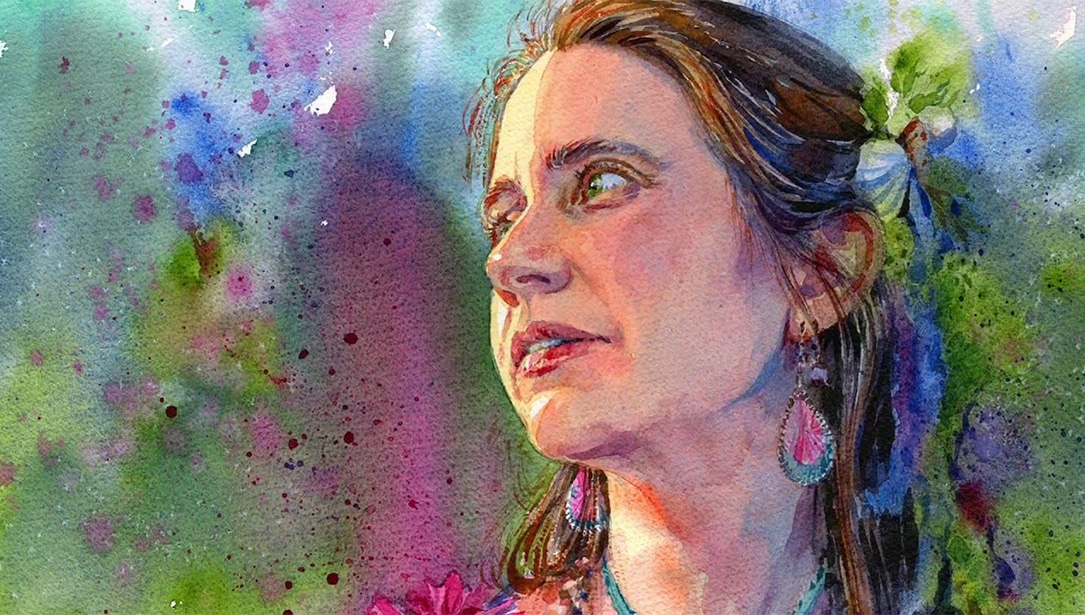Painting on the slick surface of a synthetic paper (Yupo is one type) is different than regular watercolor paper and requires some variation of techniques. The most outstanding advantage to this paper is that the artist can wipe back to regain the white of the paper, which makes it an excellent surface for beginning watercolorists.
It can also be a very exciting paper for more advanced and experimental artists.
I start my paintings with very little or no drawing at all, instead using a brush to draw with a light watercolor paint. I have found that when I draw with a large brush, focusing on shapes, my painting is much fresher and often leads to a more abstract painting. If the painting includes many shapes, as the petals in this water lily demonstration, I may draw in some of the shapes using a few pencil lines. If you like to draw and plan your painting, I would suggest that you do your drawing on tracing paper and transfer over only the lines that are necessary, eliminating any erasing. Erasing on synthetic paper changes the surface and the paint tends not to adhere as well.

Step 1
Tape the paper to your board using four rolled pieces of artist tape under the corners. Synthetic paper remains flat and will not buckle — a wonderful advantage of this material. In this demonstration, the background is painted first. Begin after all of your paints have been mixed and are ready to use. Choose various flat brushes and large round brushes, then begin adding color. Remember to place the colors you have chosen in more than one area and alternate the colors, laying them next to each other on the painting.

Step 2
Allow small white shapes to remain in the background. You may also want to leave larger shapes that can be painted later, such as leaves or parts of other flowers. These whites create a sparkle and can be used to lead the eye through the painting. When the background is covered, take time to watch the paint mingle and flow. You can assist this action by tilting the board in various directions.

Step 3
Use a paper towel to pick up the excess paint on the edges as you tip the board. Spraying with water will help the paint to flow and dilute the pigment to create lighter values. Waiting to spray until the paint is almost dry will produce a beautiful texture.
Allow the painting to dry. Keep your eye on it while it is drying to watch for puddles or shapes that you may want to guide, dilute, or change with a brush. You can change these shapes now or wait until the painting is completely dry. When dry, re-wet the area you would like to change and pull out some paint if it is too dark or add some paint if it is too light. Try blotting with paper towels and cotton balls, or cleaning out a small area or edge with a Q-tip.

Step 4
After the background is dry, start painting in the flower. I pick up the background colors and use them for the flower. To soften or recreate lost edges on the flower petals next to the background, load a brush with clean water and gently brush the dried edges to loosen the paint.

Step 5
Add dark paint in areas of the background as needed. There is a point you will reach where you begin to feel that the painting is getting near completion. This is the point to stop. Let the painting dry and look at it a day or two later with a fresh eye. You will find it much easier to see which areas are working and which areas need attention. You may see that all you need is to darken the values of a couple of areas in the petals.








